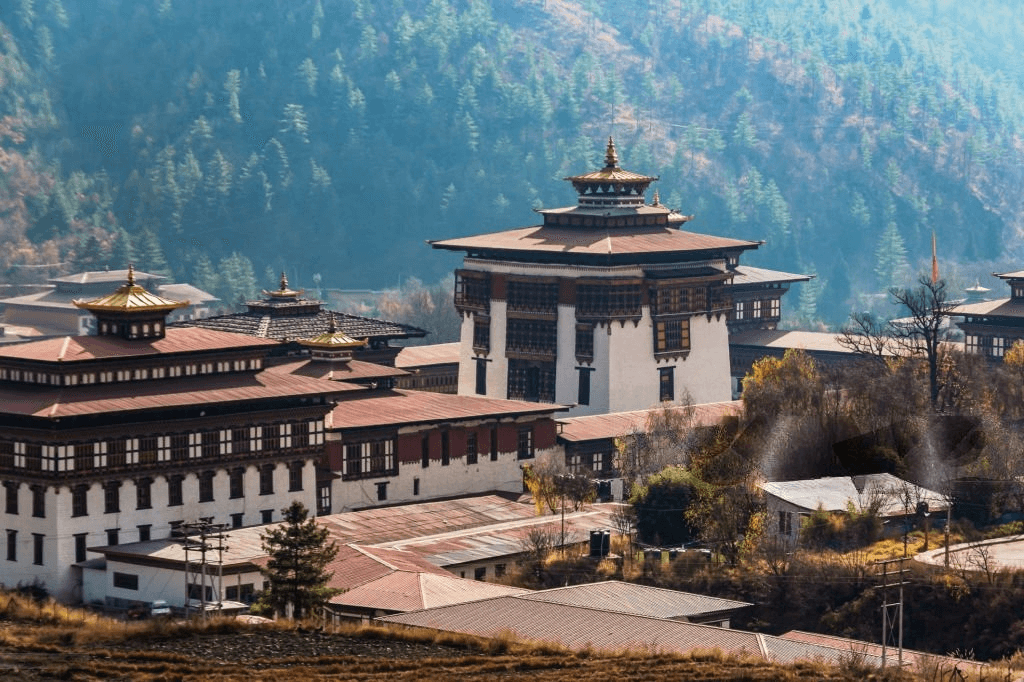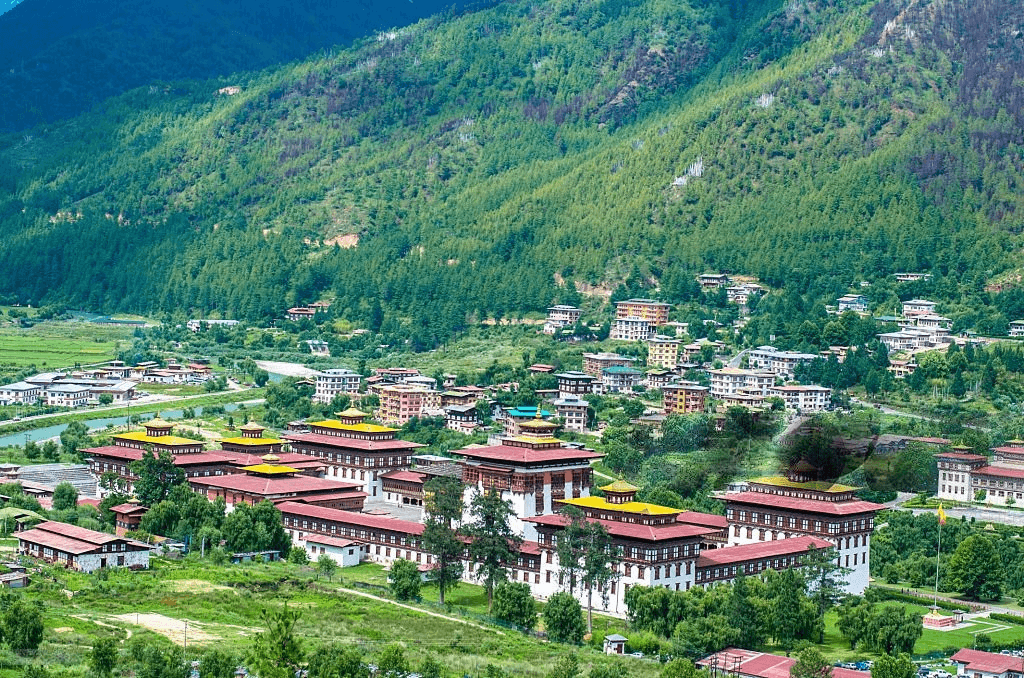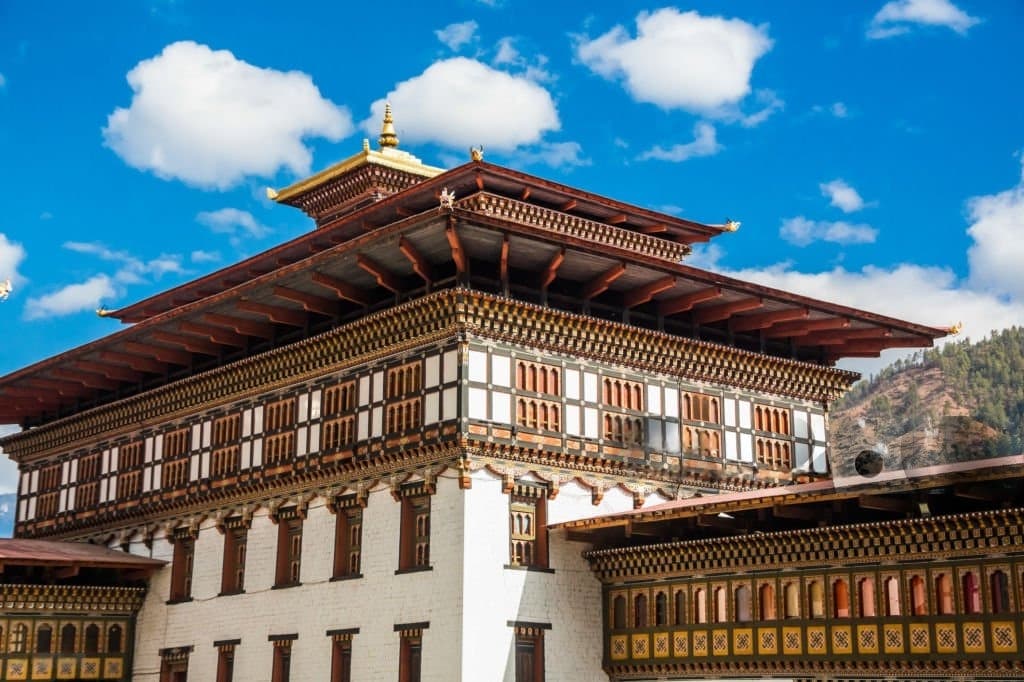Tashichho Dzong





Overview
Thimphu Dzong, formally known as Tashichho Dzong, is an emblem of Bhutan’s rich heritage and cultural legacy. Nestled on the western bank of the Wang Chhu River, this grand fortress-monastery stands as a testament to Bhutanese architecture, history, and spirituality. It is not just a significant landmark but the epicenter of Bhutan's political and religious life.
The origins of Thimphu Dzong date back to the 13th century when it was initially a modest structure founded by Lama Gyalwa Lhanangpa. However, the dzong as it stands today was built in 1641 by Zhabdrung Ngawang Namgyal, the unifier of Bhutan. Over the centuries, it has undergone several renovations and expansions, particularly in the 1960s under King Jigme Dorji Wangchuck, who moved the capital from Punakha to Thimphu and transformed the dzong into the seat of the national government.
Thimphu Dzong is a masterpiece of traditional Bhutanese architecture. The fortress is characterized by massive whitewashed walls, intricate wooden carvings, and ornate red and gold accents. The dzong’s central utse, or tower, dominates the skyline, providing a majestic focal point. The courtyards within are vast and meticulously maintained, surrounded by administrative offices and monastic quarters.
One of the architectural highlights is the serene yet imposing Kuenrey, the main assembly hall. This hall is adorned with exquisite murals and statues that depict scenes from Buddhist mythology and Bhutanese history. The grandeur of the hall, with its high ceilings, massive pillars, and elaborate decorations, reflects the spiritual and cultural essence of Bhutan.
Thimphu Dzong serves a dual role as both the seat of the government and a monastic center. It houses the throne room and offices of the king, the secretariat, and various government departments. This fusion of political and religious functions is unique to Bhutan, reflecting the harmonious integration of spirituality and governance in Bhutanese society.
The dzong is also the summer residence of the Je Khenpo, the chief abbot of Bhutan, and the central monastic body. During the warmer months, monks from Punakha Dzong relocate to Thimphu Dzong, filling its courtyards and halls with the rhythms of religious rituals and prayers.
Thimphu Dzong is the venue for some of Bhutan’s most important festivals and ceremonies. The annual Thimphu Tshechu, held in the dzong’s courtyards, is a grand religious festival that attracts thousands of Bhutanese and tourists alike. This multi-day event features traditional mask dances, cultural performances, and rituals aimed at bringing blessings and good fortune. The vibrant festival is a celebration of Bhutanese culture and spirituality, showcasing the deep-rooted traditions that define the nation.
Surrounding Thimphu Dzong are beautifully landscaped gardens that offer a tranquil retreat from the bustling capital. The serene environment, with blooming flowers, manicured lawns, and ancient trees, provides a peaceful ambiance for reflection and relaxation. These gardens enhance the dzong’s aesthetic appeal, making it a delightful place for both visitors and locals.
Thimphu Dzong is more than just a historical monument; it is a living institution that continues to play a pivotal role in Bhutan’s contemporary life. It symbolizes the continuity of Bhutanese culture, the enduring legacy of the Wangchuck dynasty, and the unbroken lineage of the nation’s spiritual and political traditions. Visiting Thimphu Dzong offers a profound insight into the soul of Bhutan, where the past and present converge in a harmonious blend of tradition and modernity.
In summary, Thimphu Dzong stands as a beacon of Bhutanese heritage, embodying the nation's spiritual depth, cultural richness, and political significance. It is a place where history lives, traditions thrive, and the heart of Bhutan beats strong.
Label: Top 5 places to visit in Bhutan
How to reach: By road
Timings: 9 AM to 5 PM
Time Required: 2 hours
Entry Fee: INR 501

